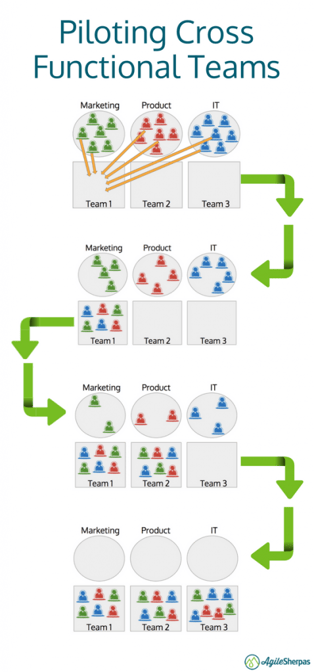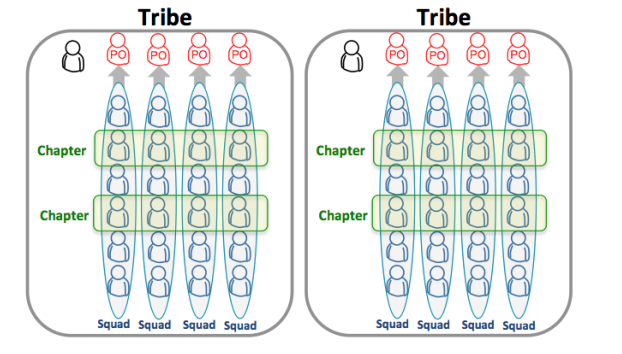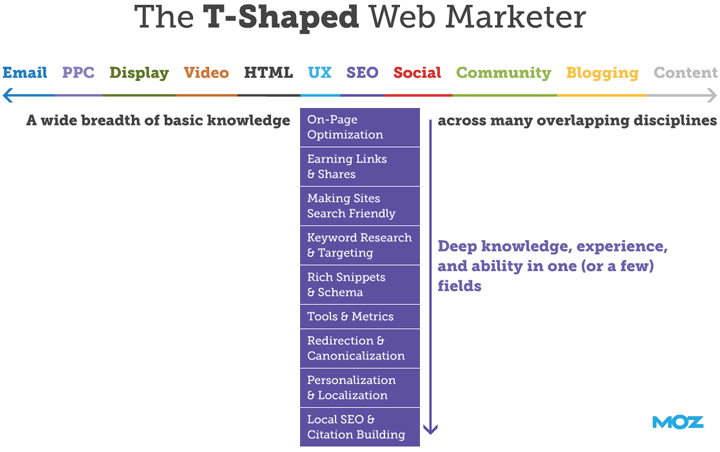-
- marketing agility
- Teams
- Organizations
- Education
- enterprise
- Articles
- Individuals
- Transformation
- Solution
- Leadership
- Getting Started
- business agility
- agile management
- going agile
- Frameworks
- agile mindset
- Agile Marketing Tools
- agile marketing journey
- organizational alignment
- Agile Marketers
- People
- Selection
- (Featured Posts)
- strategy
- agile journey
- Metrics and Data
- Kanban
- Resources
- Why Agile Marketing
- agile project management
- self-managing team
- Meetings
- Scrum
- agile adoption
- scaled agile marketing
- tactics
- scaled agile
- AI
- Agile Meetings
- agile marketing training
- agile takeaways
- Agile Leadership
- agile coach
- enterprise marketing agility
- Scrumban
- state of agile marketing
- team empowerment
- Intermediate
- agile marketing mindset
- agile marketing planning
- agile plan
- Individual
- Team
- Videos
- agile marketing
- kanban board
- Agile Marketing Terms
- agile transformation
- traditional marketing
- FAQ
- agile teams
- Agile Marketing Glossary
- CoE
- Scrumban
- agile
- agile marketer
- agile marketing case study
- agile marketing coaching
- agile marketing leaders
- agile marketing methodologies
- agile marketing metrics
- agile pilot
- agile sales
- agile team
- agile work breakdown
- cycle time
- employee satisfaction
- marketing value stream
- marketing-analytics
- remote teams
- sprints
- throughput
- work breakdown structure
- News
- agile brand
- agile marketing books
- agile marketing pilot
- agile marketing transformation
- agile review process
- agile team charter
- cost of delay
- hybrid framework
- pdca
- remote working
- scrum master
- stable agile teams
- stand ups
- startups
- team charter
- team morale
- user story
- value stream mapping
- visual workflow
3 Steps on the Path to Cross Functional Agile Marketing Teams

I often run a bottleneck workshop with Agile marketing teams where each group is given the goal of folding as many origami hats and boats as possible.
At the beginning of the exercise each person has a single set of tasks they can perform. For example, one person does one kind of fold and then passes it off to the next person, who can only do the second fold, and so on.
A single team member can decorate the final products, and only one team member can review the “products” for quality.
When the time comes to select process improvements, nearly everybody wants to know how they can upskill their team members.
It's immediately clear that such rigid specialization doesn't serve the needs of the teams.
This kind of situation, where the flow of work is painfully slow as it passes from one specialist to another, is why cross functionality is a core value of Agile (and is particularly important on Agile marketing teams, though anyone practicing business agility can benefit).
Benefits of Cross Functional Agile Marketing Teams
When team members have the ability to work on different parts of the team’s projects, we gain so much:
- Predictability: Our delivery dates aren’t dependent on when our sole copywriter will have time to write things. Several people can provide copy, so we can more confidently predict workflow.
- Sustainable pace: We don’t have a few people working like crazy to keep up, while others sit around waiting for new work to come in. Work is spread out more equitably, keeping everyone working at a reasonable clip that they can sustain indefinitely.
- Early and continuous delivery of valuable campaigns: When most team members can work on most projects, they’re more likely to release things often.
- Simplicity: One of my favorite agile principles is that it’s essential to maximize the amount of work NOT done. Cross functional teams can communicate about what’s really important, what can be reused, and what just doesn’t work, so they eliminate pointless projects.
So cross functionality is great, but it’s not always the reality for marketing teams, especially early on during an agile adoption.
Let’s take a look at three different phases of cross functionality, how to handle workflow issues during each one, and how to steadily increase this valuable characteristic in your Agile marketing teams.
Level 1: Cross Functional Marketing Department
Having a cross functional department simply means that somewhere in marketing you’ve got people who can do everything that you need to release marketing work. In other words, you don’t rely on agencies, freelancers, or any other resources outside the department.
This early version of cross functionality may already exist in your marketing team or department, or it may require some adjustment as you bring work in house.
(See the Chemmart case study for an example of how Agile helped this company save millions by creating an in-house agency.)
While a cross functional department is good, it usually still includes functional silos, meaning teams within the department are exclusively responsible for specific kinds of work. This means projects or campaigns need to pass from one group to another to another before they can be released.
And these handoffs, in turn, mean that the whole department will be constrained by a single bottleneck.
Level One Bottlenecks
The bottlenecks in a cross functional marketing department tend to be with a group that touches nearly every project or campaign, such as design or copywriting.
To be clear, bottlenecks are not a bad thing.
According to the Theory of Constraints every single system has one.
What Agile marketing teams need to do is figure out where their bottleneck is and then address it carefully.
How to deal with a bottleneck in a cross functional department:
Step 1: Be sure you know where the bottleneck REALLY is.
This is key to any bottleneck-related work, because taking action elsewhere in the system can make things worse for bottleneck resources. Bottlenecks are busy all the time, work piles up in front of them, and people downstream from them (those who receive work from them) are idle some of the time.
Step 2: Choose options that affect only the bottleneck.
These include ensuring they’re always working on the highest value work, limiting their task switching, taking away non-value adding work, and eliminating wasted effort.
Basically, make sure they have everything they need and don’t bother them with extra stuff.
When dealing with a department-wide bottleneck you don’t want to mess with too much of the system, so simple solutions focused only on the bottleneck are your best bet. In the Theory of Constraints this is known as exploiting the bottleneck.
Important note: Making the bottleneck work longer is not the answer. Throwing more people or budget at this part of the process is not the answer either, at least not until you’ve taken other steps to make the bottleneck(s) work better.
Getting to the Next Level
Once your bottlenecks are functioning more efficiently, the department will be able to more accurately predict delivery of work (assuming interruptions can be managed effectively).
You’ll be able to make data-driven assessments about approximate delivery time, instead of crossing your fingers that the bottleneck will get your project done before your deadline.
As you increase in agility and cross functionality, it will become increasingly important for the entire department to understand strategic goals and objectives so groups aren’t working at cross purposes.
Leadership, whether functional Agile team leads or traditional marketing directors, needs to clearly and frequently communicate priorities.
You should also begin experimenting with Agile pilot teams, which are made up of members from multiple silos or groups. During these early days you’re essentially building smaller, cross functional teams one by one.
Ideally they are stable and permanent, because you want to keep incrementally building more of these groups so you can eventually become a department made up entirely of cross functional Agile marketing teams.
Before proceeding to learn about cross functional teams , take a moment to explore The Agile Marketing Credo — the new foundation for how modern marketers work with clarity, focus, and impact.
Before exploring the next level, why don't you take a second to get our Agile Marketing Transformation Checklist?
Level 2: Cross Functional Agile Marketing Teams
At his level we have multiple teams that can complete projects independently. Each group has the skills needed to get valuable work done, not just the department as a whole.
Team-based cross functionality allows teams to focus on audience segments, phases of customer journey, or internal business units, so they can become true subject matter experts in that area. They deliver targeted, consistent experiences for customers (something that's only getting more important in areas like HLS marketing).
Once again, this requires clear and constant communication between teams and strong leadership to ensure teams are pulling in same strategic, long-term direction. A great example of how this works is the Spotify model.
Here you can see there are cross functional squads led by a Product Owner (in Agile marketing we often call these Marketing Owners). Chapters extend across Squads and encompass people with similar responsibilities. So all digital marketing specialists might be in a Chapter, which is led and evaluated by a Chapter Lead.
All those people are part of the same Tribe, which includes multiple Squads who are all working towards similar objectives. Each Tribe has a leader (and sometimes an Agile coach) who ensures its members are in line with organizational objectives and larger marketing strategies.
In this kind of system bottlenecks tend to be with a single individual in a team or Chapter, such as a copywriter, designer, or marketing automation expert.
We also sometimes see people on these kinds of teams become bored or underused if work isn’t well-planned and they run out of things to do.
Some teams try to address this issue by having low-frequency resources sit on several teams, but this may create more problems than it solves if teams don’t coordinate their planning.
If everyone is planning video-heavy projects next month and there’s only one video marketer who sits on three teams, things are going to get messy.
Level Two Bottlenecks
Bottlenecks in these kinds of systems are sometimes easier to tackle because they impact fewer people.
In a cross functional department each and every team might be dependent on one bottleneck, but when we get to cross functional teams or Chapters, each bottleneck probably only impacts a single team.
How to deal with bottlenecks on cross functional teams:
Step 1: Once again, be sure you know where the bottleneck REALLY is. If, for instance, you think it’s copywriting that’s holding you up but it was really legal review slowing them down, your tactics for fixing the copywriting bottleneck might actually bog down the system.
Step 2: Exploit the bottleneck first. Take steps similar to what you’d do with a cross functional department, namely ensuring the bottleneck doesn’t work on low-value tasks and has everything they need to work effectively. Only once you’ve exhausted these kinds of actions should you move to Step 3.
Step 3: Subordinate the team to the bottleneck. In smaller teams it may be more feasible to let another resource take over some of the bottleneck’s work, have the team work at the bottleneck’s pace, and/or have non-bottleneck resources spend downtime supporting the bottleneck. In Theory of Constraints lingo, you’re subordinating everything else to the constraint.
I also recommend using something like the Guild model among cross functional teams to ensure bottlenecks (and all team members, for that matter) are always improving their skills, finding ways to optimize their workflow, etc.
Getting to the Next Level
Once you have cross functional teams, your next move will be to expand the skills of the people on those teams so they can assist in a wider variety of work.
No need to wait for a single editor to review every line of copy before it’s published if three different people are trained in editorial guidelines and review protocols.
The steps to get here sound simple: cross train team members and encourage pairing (having two marketers work on a single task/project together). But finding time and space to make them happen can be challenging, to say the least.
Level 3: Cross Functional Teams Made Up of Cross Skilled Marketers
Agile marketing departments who achieve this level don’t get here by accident. They have a clearly defined roadmap for breaking down silos and upskilling team members.
They know which people want to learn which skills, and which skills would be useful for them to have. For instance, maybe a PPC specialist would benefit from learning landing page design. They can get better insight to paid campaign performance, take work off the designers, and pitch in with work that requires landing pages but isn’t directly PPC-related.
Training that same specialist in event planning, on the other hand, is less likely to result in such useful collaboration.
Of course, no team will ever be completely and totally cross functional. What we’re after are t-shaped marketers, or generalizing specialists.
I like the way David Green describes generalizing specialists over on DZone:
“with generalizing specialists, you get the best of both worlds: the experience of specialists in their area with the flexibility and breadth of ideas that come from the whole team being able to work on whatever is required. When the entire team can swarm on any area, you have a very flexible team”
If we think about these folks as t-shaped, they look something like this:
Why We Want Cross Functionality
Our ultimate goal is to have a team that’s able to complete a project start to finish, with many people able to jump in and help drive tasks and/or projects towards completion.
You know you’re on the right track when your velocity and/or throughput really starts improving, team members aren’t swinging wildly between busy and bored, and both individual teams and the department as a whole are running at a sustainable pace.
This situation allows Agile marketing teams to get more done, do their best, most creative work, and predictably deliver campaigns.
Cross functionality, whether in a department, team, or individual, may be difficult to achieve, but the results are well worth it. Regardless of your marketing department's size or industry (yes, even highly regulated BFSI marketing teams), cross-functionality is a worthwhile goal.
Before moving on, don't forget to get your copy of our Agile Marketing Transformation Checklist.
Topics discussed

Andrea Fryrear is a co-founder of AgileSherpas and oversees training, coaching, and consulting efforts for enterprise Agile marketing transformations.
Improve your Marketing Ops every week
Subscribe to our blog to get insights sent directly to your inbox.







